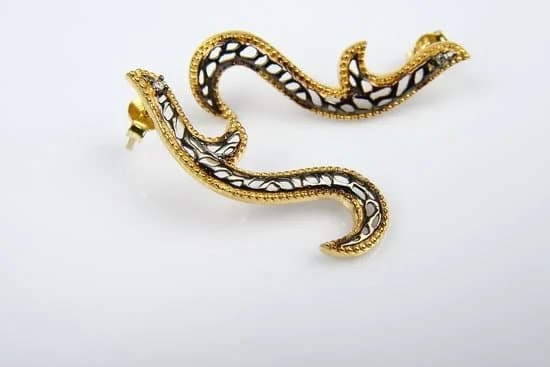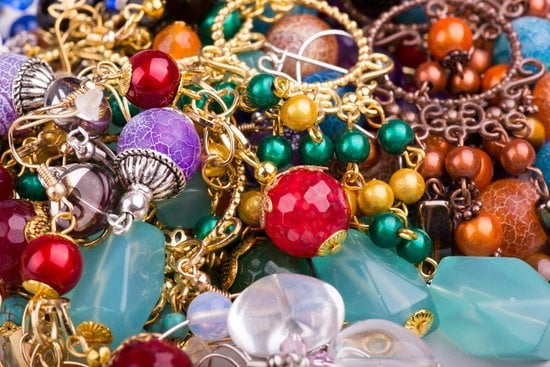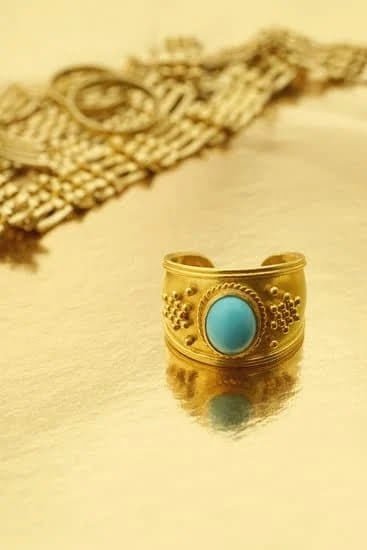Are you wondering how to tell if gold jewelry is real? The authenticity of gold jewelry is of utmost importance when making a purchase or evaluating existing pieces. In this article, we will delve into the various methods and tests that can be used to determine whether your gold jewelry is genuine. From visual inspections to chemical tests, we will explore the different techniques that experts use to verify the purity and authenticity of gold.
As the value of gold continues to rise, it becomes increasingly important for consumers to be able to distinguish between real gold and its imitations. Understanding the significance of purchasing authentic gold jewelry can safeguard against scams and ensure that you are getting what you paid for. By learning how to conduct these tests, you can have peace of mind knowing that your gold jewelry is indeed genuine.
Whether you are a jewelry enthusiast or someone looking to invest in gold, having the knowledge to identify real gold jewelry is essential. With the different methods explained in this article, you will be equipped with the tools needed to confidently assess the authenticity of any piece of gold jewelry that comes your way.
The Visual Test
When it comes to determining the authenticity of gold jewelry, one of the most basic methods is through a visual inspection. This involves examining the color and shine of the gold to look for any signs of fake or impure gold.
Color
Real gold jewelry should have a rich, warm hue. It should not have any discoloration or fading. If you notice any greenish or reddish tinge, it may indicate that the piece is not real gold.
Shine
Authentic gold jewelry has a lustrous shine that does not fade over time. Fake or low-quality gold may appear dull and lackluster. When inspecting the shine, hold the piece under bright light and observe how it reflects light. Real gold will have a distinct brilliance.
While the visual test can give you some initial clues about the authenticity of your gold jewelry, it is important to note that this method alone is not foolproof. However, when combined with other methods such as the magnet test and hallmark test, you can get a more comprehensive assessment of whether your jewelry is real or not.
Remember that if you are still unsure about the authenticity of your gold jewelry, it’s best to consult with a professional jeweler who can perform more advanced tests to verify its purity.
The Magnet Test
Gold is a valuable metal that has been prized for its beauty and rarity for centuries. Unfortunately, there are many counterfeit pieces of gold jewelry on the market, making it essential to know how to determine if gold jewelry is real. One method for testing the authenticity of gold jewelry is the magnet test. This test involves checking if the piece is attracted to magnets, as real gold is not magnetic.
It is important to note that pure gold is not magnetic, meaning it will not be attracted to a magnet. However, some counterfeit pieces may contain other metals that are magnetic, causing them to be drawn to the magnet. To conduct the magnet test, simply hold a magnet near the piece of jewelry and observe whether there is any attraction.
If the jewelry shows any signs of being attracted to the magnet, it is likely that it is not made of real gold. Keep in mind that this test should be used in conjunction with other methods for verifying authenticity, such as examining the color and shine of the gold or checking for stamps and hallmarks that indicate purity.
| Result | Implication |
|---|---|
| Attracted to Magnet | Likely Not Real Gold |
| Not Attracted to Magnet | Possible Real Gold (additional tests needed) |
The Hallmark Test
One of the most reliable ways to determine if your gold jewelry is real is by conducting the hallmark test. Hallmarks are stamps or engravings on the jewelry that indicate its purity and authenticity. Here’s how you can interpret these hallmarks to ensure that your gold jewelry is genuine:
- Look for a karat stamp: A karat stamp indicates the purity of the gold, with 24 karats being the highest level of purity. Common karat stamps include 10k, 14k, 18k, and 22k, which represent the percentage of pure gold in the jewelry. For example, 14k gold contains 58.3% pure gold.
- Identify the manufacturer’s mark: Many pieces of authentic gold jewelry have a manufacturer’s mark which indicates where the piece was made. This mark can provide valuable information about the origin and authenticity of the jewelry.
- Learn about international hallmarks: Depending on where your gold jewelry was produced, it may have specific international hallmarks indicating its authenticity. For example, in Europe, you might find a three-digit number known as a fineness number that represents the purity of the gold.
By paying attention to these hallmarks when examining your gold jewelry, you can gain valuable insight into its authenticity and ensure that you are investing in genuine pieces.
While conducting other tests such as checking for color and shine or attempting to scratch the surface may give some indication of whether your gold jewelry is real or not, nothing quite compares to interpreting its hallmarks.
It is important to note that relying solely on one method may not be sufficient – utilizing a combination of visual inspection along with interpretation of hallmarks will provide a more comprehensive assessment of whether your gold jewelry is authentic or not.
The Acid Test
When it comes to determining if your gold jewelry is real, the acid test can be a reliable method. This test involves using nitric acid to verify the purity of the gold. Here’s how you can conduct this test at home:
1. Supplies Needed: To perform the acid test, you will need nitric acid, a testing stone, and a dropper. You can easily find these supplies at jewelry supply stores or online.
2. Test Procedure: Begin by making a small scratch on the testing stone using your gold jewelry. Then, apply a drop of nitric acid to the area where you made the scratch.
3. Observation: As you apply the nitric acid, observe the reaction that occurs. If the gold is genuine, there should be little to no reaction or discoloration on the testing stone. However, if the gold is fake or of lower purity, it will react with the acid and cause a noticeable color change.
It’s important to note that nitric acid is a hazardous substance and should be handled with care. If you are unsure about conducting this test yourself, it’s best to seek assistance from a professional jeweler who has experience in using nitric acid to verify gold’s purity.
The Weight Test
One of the most common and simplest ways to determine if your gold jewelry is real is by conducting the weight test. This method involves using a scale to weigh the piece of jewelry and compare it to the expected weight of real gold. It’s important to note that this method may require some specialized equipment, such as a jeweler’s scale, that can accurately measure small weights in grams or pennyweights.
Real gold has a specific density and weight, so if you have a piece of jewelry that is significantly lighter than what you would expect for its size, it may be an indication that it’s not authentic gold. For example, 14K gold should weigh around 13.07 grams per cubic centimeter, while 18K gold should weigh approximately 15.70 grams per cubic centimeter.
To conduct the weight test, you will need to use a jeweler’s scale that can measure small weights accurately. Place the jewelry item on the scale and note its weight in grams or pennyweights. You can then use this information to compare it to the standard weights for different karats of gold to determine if your jewelry is real or not.
It’s important to keep in mind that while the weight test can provide valuable information about the authenticity of your gold jewelry, it should be used in conjunction with other methods such as the visual test and hallmark test for a more comprehensive assessment.
| Gold Karat | Grams Per Cubic Centimeter | Pennyweights Per Cubic Centimeter |
|---|---|---|
| 24K | 32 | 58 |
| 18K | 70 | 81 |
| 14K | 07 | 84 |
The Scratch Test
When it comes to determining the authenticity of gold jewelry, one important test to consider is the scratch test. This method involves assessing the gold’s resistance to scratching, which can provide valuable insight into whether the piece is real or not. By understanding the process and how to conduct this test properly, you can gain more confidence in identifying genuine gold jewelry.
Understanding the Scratch Test
The scratch test involves using a metal file or a sharp object to gently scratch the surface of the gold jewelry. Real gold is quite resistant to scratches, so if there are no marks or damages left on the piece after conducting this test, it is likely that the jewelry is authentic. However, it’s important to note that this method should be used with caution as it may cause damage to plated or lower-karat gold pieces.
Conducting the Test Safely
To ensure that you don’t damage your precious jewelry while conducting the scratch test, it’s important to do it carefully and with a light hand. Use a small area on the back of the jewelry piece where any marks will be less noticeable.
It’s also advisable for individuals without experience in testing metals to seek professional help before attempting these tests at home. With careful consideration and execution, you will be able to accurately determine if your gold jewelry is real.
By familiarizing yourself with different methods such as the scratch test, you can gain confidence in evaluating and verifying the authenticity of your gold jewelry collection. Learning how to tell if gold jewelry is real through various methods will help you distinguish between authentic pieces and imitation ones with greater accuracy and precision.
Conclusion
In conclusion, determining whether gold jewelry is real or fake is an important skill that every jewelry owner should possess. By understanding the different methods to determine authenticity, individuals can protect themselves from purchasing counterfeit items and ensure they are getting the true value of their investment.
The visual test is a simple yet effective way to gauge the authenticity of gold jewelry. Real gold will exhibit a distinct color and shine that is hard to replicate with counterfeit materials. The magnet test can also be a quick indicator, as real gold is not magnetic and should not be attracted to a magnet. Interpreting the stamps and hallmarks on gold jewelry through the hallmark test can provide valuable information about its purity and origin.
For a more thorough assessment, individuals can opt for the acid test which involves using nitric acid to verify the gold’s purity. Additionally, weighing the jewelry through the weight test and assessing its resistance to scratching via the scratch test are reliable ways to ascertain its authenticity. By being aware of these methods, individuals can confidently determine whether their gold jewelry is genuine or not.
Frequently Asked Questions
How Can You Tell if Jewelry Is Real Gold at Home?
There are a few methods to tell if jewelry is real gold at home. One way is to look for markings on the piece, such as “14K” or “18K,” indicating the karat of the gold.
You can also perform a simple acid test using testing kits available for purchase. Another method is to use a magnet – real gold is not magnetic, so if the jewelry is attracted to the magnet, it’s likely not real gold.
How Can You Tell if Jewelry Is Gold or Gold Plated?
It can be tricky to differentiate between solid gold and gold-plated jewelry, but there are a few ways to tell them apart. One method is to look for markings indicating the karat of the gold, which plated jewelry may not have.
You can also check for signs of wear and tear – if you see any signs of tarnishing or flaking, it’s more likely that the piece is gold plated rather than solid gold.
How Do You Identify Fake Gold?
Identifying fake gold can be challenging, but there are some indicators to watch out for. Fake gold may have inconsistencies in its color or luster, often appearing too shiny or too dull compared to real gold.
Additionally, fake gold tends to be lightweight due to its composition with other metals. If you’re still unsure about authenticity, taking it to a professional jeweler for evaluation may provide a definitive answer.

Welcome to my jewelry blog! My name is Sarah and I am the owner of this blog.
I love making jewelry and sharing my creations with others.
So whether you’re someone who loves wearing jewelry yourself or simply enjoys learning about it, be sure to check out my blog for insightful posts on everything related to this exciting topic!





